
How to Use Grove-IMU: Examples, Pinouts, and Specs
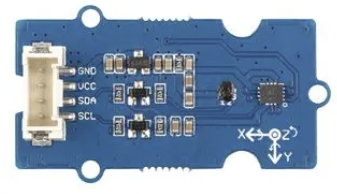
 Design with Grove-IMU in Cirkit Designer
Design with Grove-IMU in Cirkit DesignerIntroduction
The Grove-IMU (Manufacturer Part ID: lcm20600+AK09918) is a high-performance Inertial Measurement Unit (IMU) developed by Seeed Studio. It integrates a 3-axis accelerometer, a 3-axis gyroscope, and a 3-axis magnetometer into a single module, enabling precise orientation and motion sensing. This compact and versatile sensor is ideal for applications such as robotics, drones, wearable devices, gaming controllers, and navigation systems.
The Grove-IMU is part of the Grove ecosystem, which simplifies prototyping and development by providing standardized connectors and plug-and-play functionality. It communicates with microcontrollers via the I2C interface, making it compatible with popular development platforms like Arduino, Raspberry Pi, and others.
Explore Projects Built with Grove-IMU
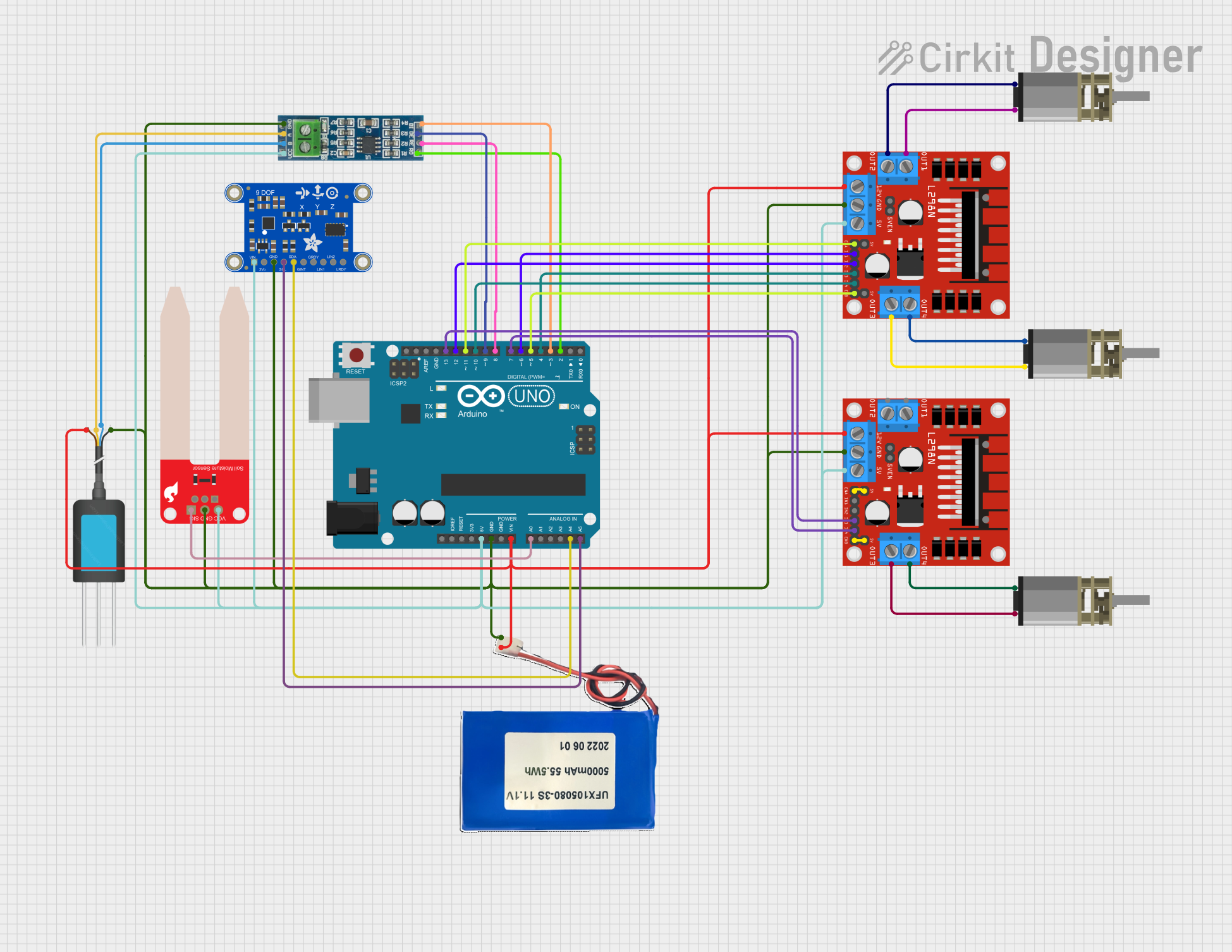
 Open Project in Cirkit Designer
Open Project in Cirkit Designer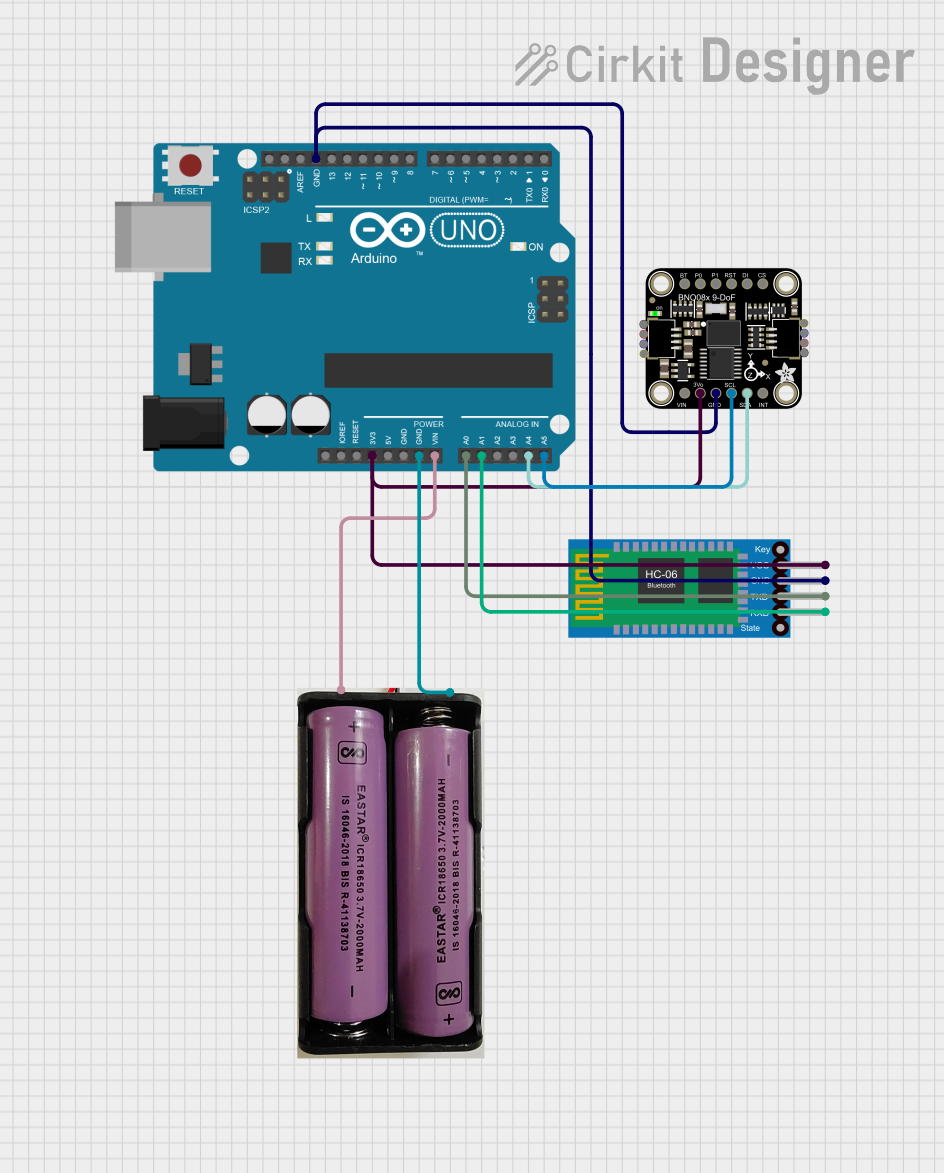
 Open Project in Cirkit Designer
Open Project in Cirkit Designer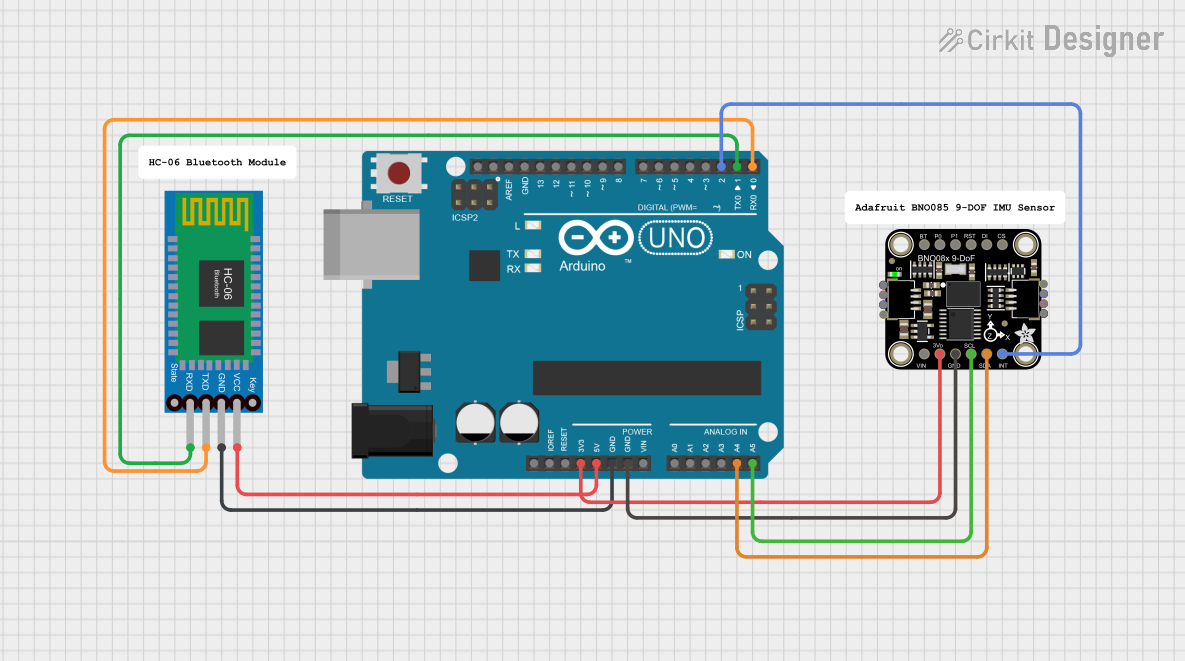
 Open Project in Cirkit Designer
Open Project in Cirkit Designer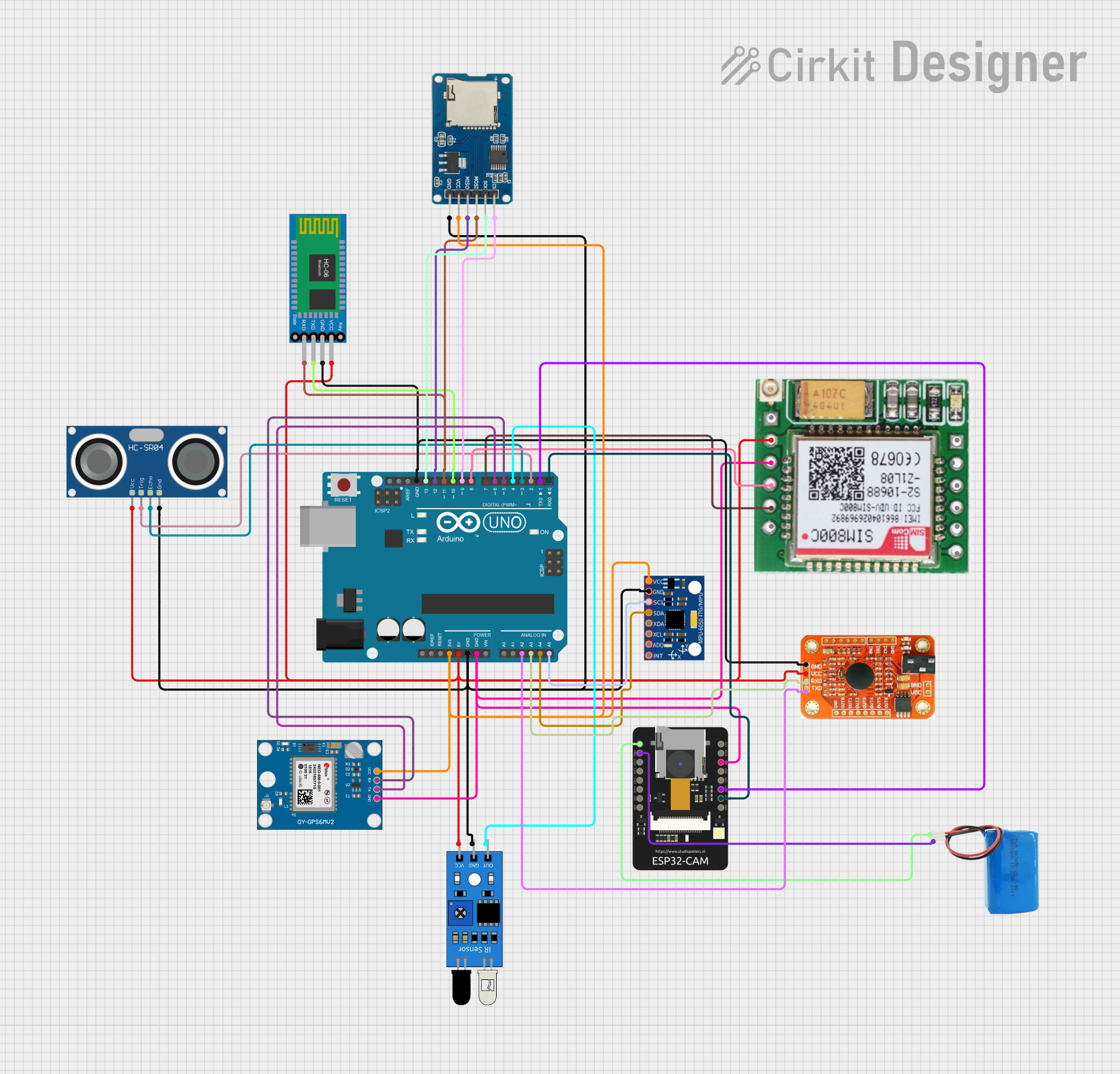
 Open Project in Cirkit Designer
Open Project in Cirkit DesignerExplore Projects Built with Grove-IMU

 Open Project in Cirkit Designer
Open Project in Cirkit Designer
 Open Project in Cirkit Designer
Open Project in Cirkit Designer
 Open Project in Cirkit Designer
Open Project in Cirkit Designer
 Open Project in Cirkit Designer
Open Project in Cirkit DesignerTechnical Specifications
Below are the key technical details of the Grove-IMU:
| Parameter | Value |
|---|---|
| Manufacturer | Seeed Studio |
| Part ID | lcm20600+AK09918 |
| Sensor Components | 3-axis accelerometer, 3-axis gyroscope, 3-axis magnetometer |
| Communication Interface | I2C |
| Operating Voltage | 3.3V to 5V |
| Operating Current | ~5mA |
| Accelerometer Range | ±2g, ±4g, ±8g, ±16g |
| Gyroscope Range | ±250°/s, ±500°/s, ±1000°/s, ±2000°/s |
| Magnetometer Range | ±4900µT |
| Operating Temperature | -40°C to +85°C |
| Dimensions | 20mm x 40mm |
Pin Configuration
The Grove-IMU module features a standard 4-pin Grove connector. The pinout is as follows:
| Pin | Name | Description |
|---|---|---|
| 1 | VCC | Power supply (3.3V to 5V) |
| 2 | GND | Ground |
| 3 | SDA | I2C data line |
| 4 | SCL | I2C clock line |
Usage Instructions
Connecting the Grove-IMU to an Arduino UNO
Hardware Setup:
- Connect the Grove-IMU to the I2C port of the Grove Base Shield.
- Attach the Grove Base Shield to the Arduino UNO.
- Ensure the Arduino is powered via USB or an external power source.
Install Required Libraries:
- Download and install the
Seeed_Arduino_LSM6DS3andSeeed_Arduino_AK09918libraries from the Arduino Library Manager.
- Download and install the
Example Code: Below is an example Arduino sketch to read accelerometer, gyroscope, and magnetometer data from the Grove-IMU:
#include <Wire.h> #include "LSM6DS3.h" // Library for accelerometer and gyroscope #include "AK09918.h" // Library for magnetometer LSM6DS3 imu; // Create an instance of the LSM6DS3 class AK09918 mag; // Create an instance of the AK09918 class void setup() { Serial.begin(9600); // Initialize serial communication Wire.begin(); // Initialize I2C communication // Initialize the accelerometer and gyroscope if (!imu.begin()) { Serial.println("Failed to initialize LSM6DS3!"); while (1); // Halt execution if initialization fails } // Initialize the magnetometer if (!mag.begin()) { Serial.println("Failed to initialize AK09918!"); while (1); // Halt execution if initialization fails } Serial.println("Grove-IMU initialized successfully!"); } void loop() { // Read accelerometer data float ax = imu.readFloatAccelX(); float ay = imu.readFloatAccelY(); float az = imu.readFloatAccelZ(); // Read gyroscope data float gx = imu.readFloatGyroX(); float gy = imu.readFloatGyroY(); float gz = imu.readFloatGyroZ(); // Read magnetometer data float mx = mag.readMagX(); float my = mag.readMagY(); float mz = mag.readMagZ(); // Print sensor data to the Serial Monitor Serial.print("Accel (g): X="); Serial.print(ax, 2); Serial.print(" Y="); Serial.print(ay, 2); Serial.print(" Z="); Serial.println(az, 2); Serial.print("Gyro (°/s): X="); Serial.print(gx, 2); Serial.print(" Y="); Serial.print(gy, 2); Serial.print(" Z="); Serial.println(gz, 2); Serial.print("Mag (µT): X="); Serial.print(mx, 2); Serial.print(" Y="); Serial.print(my, 2); Serial.print(" Z="); Serial.println(mz, 2); Serial.println("-----------------------------"); delay(500); // Wait for 500ms before the next reading }
Important Considerations
- Ensure the Grove-IMU is connected to the correct I2C port on the Grove Base Shield.
- Use pull-up resistors on the I2C lines if the microcontroller does not have internal pull-ups enabled.
- Avoid placing the sensor near strong magnetic fields or vibrations, as they may affect accuracy.
Troubleshooting and FAQs
Common Issues
The sensor is not detected:
- Ensure the Grove-IMU is properly connected to the I2C port.
- Verify that the correct I2C address is being used in the code (default:
0x6Afor LSM6DS3 and0x0Cfor AK09918). - Check the wiring and ensure the power supply voltage is within the specified range.
Incorrect or unstable readings:
- Ensure the sensor is mounted securely to avoid vibrations.
- Calibrate the sensor if necessary, especially for the magnetometer.
Library installation errors:
- Ensure the required libraries (
Seeed_Arduino_LSM6DS3andSeeed_Arduino_AK09918) are installed correctly via the Arduino Library Manager.
- Ensure the required libraries (
FAQs
Q: Can the Grove-IMU be used with a Raspberry Pi?
A: Yes, the Grove-IMU can be used with a Raspberry Pi via the I2C interface. You may need to use Python libraries such as smbus to communicate with the sensor.
Q: How do I calibrate the magnetometer?
A: Calibration involves rotating the sensor in all directions to collect data for offset and scaling adjustments. Refer to the AK09918 datasheet or library documentation for detailed calibration procedures.
Q: What is the maximum sampling rate of the sensor?
A: The LSM6DS3 supports a maximum output data rate (ODR) of 1.66 kHz for the accelerometer and gyroscope. The AK09918 magnetometer supports an ODR of up to 100 Hz.